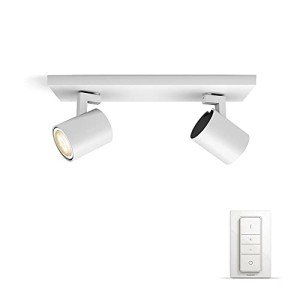Buy Energy-Efficient Lighting in the UK: A Comprehensive Guide
In the last few years, the urgency of transitioning to more sustainable routines has led lots of customers and companies to make conscious decisions about their energy consumption. Among you could try here to decrease energy costs and carbon emissions is by going with energy-efficient lighting. This article intends to notify readers about the advantages of energy-efficient lighting, types available in the UK market, and pointers for making a choice.
Comprehending Energy-Efficient Lighting
Energy-efficient lighting refers to light sources that take in less electrical energy while offering the very same level of lighting as traditional lighting choices. This reduction in energy use originates from developments in technology, which have allowed the production of lighting options that not only save energy but are also more resilient and flexible.
Benefits of Energy-Efficient Lighting
- Cost Savings: Lower energy expenses make energy-efficient lighting an attractive choice for both homes and organizations. They might include a greater initial financial investment, but their longevity and lowered energy intake cause significant cost savings gradually.
- Environmental Impact: By utilizing less electricity, energy-efficient lights contribute to decrease greenhouse gas emissions. The shift away from fossil fuels for electrical power generation makes a substantial distinction in mitigating climate change.
- Improved Light Quality: Modern energy-efficient lighting, especially LED and CFL, offers brighter, more consistent light than older innovations like incandescent bulbs.
Types of Energy-Efficient Lighting
When exploring energy-efficient alternatives, consumers can pick from numerous innovations. Here are some common types discovered in the UK:
| Type | Energy Usage | Life-span | Attributes |
|---|---|---|---|
| LED (Light Emitting Diode) | Very low | 15,000 - 50,000 hours | Instant-on, dimmable options offered, high light quality |
| CFL (Compact Fluorescent Lamp) | Low | 7,000 - 15,000 hours | More energy-efficient than incandescent, but may require time to reach complete brightness |
| Halogen Bulbs | Moderate | 2,000 - 4,000 hours | Improved effectiveness compared to traditional incandescent; gives off a warm light |
| Smart Bulbs | Differs based on use | 15,000 hours | Connects to smart home systems; programmable and energy trackers |
This variety welcomes consumers to make educated choices tailored to their requirements.
How to Choose Energy-Efficient Lighting
Choosing the right energy-efficient lighting can seem daunting due to the various alternatives available. To streamline the decision-making procedure, prospective purchasers should consider the following factors:
- Purpose of Lighting: Identify the main use of the lighting (e.g., ambient light, task lighting, or accent lighting) to identify the proper type and strength of light.
- Lumens vs. Watts: Understand that lumens show brightness while watts procedure energy intake. The objective is to take full advantage of lumens while lessening wattage.
Color Temperature: Lighting can be found in various color temperatures, expressed in Kelvin (K). Think about the desired ambiance:
- Warm White (2700K) for cozy areas
- Cool White (4000K) for workspaces
- Daytime (5000K+) for dynamic settings
- Dimming Capabilities: If selecting LED or CFL lighting, guarantee that the fixtures and bulbs work with dimmer switches if that is a requirement for the area.
- Accreditation Labels: Look for energy efficiency labels such as the Energy Saving Trust label or EU Energy Label, which show compliance with energy usage requirements.
Where to Buy Energy-Efficient Lighting in the UK
Consumers in the UK can purchase energy-efficient lighting from various sellers. Some popular alternatives include:
- Online Retailers: Websites such as Amazon, eBay, and specialist lighting websites often have a broad selection and competitive rates.
- Home Improvement Stores: Chains like B&Q, Wickes, and Homebase use in-store support for consumers to make educated choices.
- Electrical Suppliers: Stores that focus on electrical products can supply professional guidance customized to particular requirements, particularly for industrial buyers.
FAQs about Energy-Efficient Lighting
Are energy-efficient bulbs actually worth the investment?
- Yes, while the in advance cost may be greater compared to traditional bulbs, their durability and lower energy consumption offer significant cost savings in the long run.
Do energy-efficient bulbs take time to reach full brightness?
- Some types, like CFLs, might take a few minutes to heat up, while LEDs provide instant bright light.
Can I utilize energy-efficient bulbs in existing fixtures?
- Many energy-efficient bulbs can be used in standard fixtures, but always check compatibility, particularly with dimmer switches.
What ecological benefits can I anticipate from utilizing energy-efficient lighting?
- Minimized energy consumption leads to a lower need for electrical energy, which decreases greenhouse gas emissions, therefore having a positive effect on climate modification.
Switching to energy-efficient lighting not just assists to decrease electricity expenses but likewise adds to a greener planet. By understanding the types readily available, understanding what to search for when buying, and checking out trustworthy providers, UK consumers can make knowledgeable decisions that align with their needs. This small modification can cause considerable benefits for both their home or organization and the environment.
Final Thoughts
As consumers become increasingly mindful of their ecological footprint, the switch to energy-efficient lighting is a crucial step. By embracing these innovations, individuals and services in the UK improve their sustainability efforts while delighting in the advantages of modern lighting solutions.

